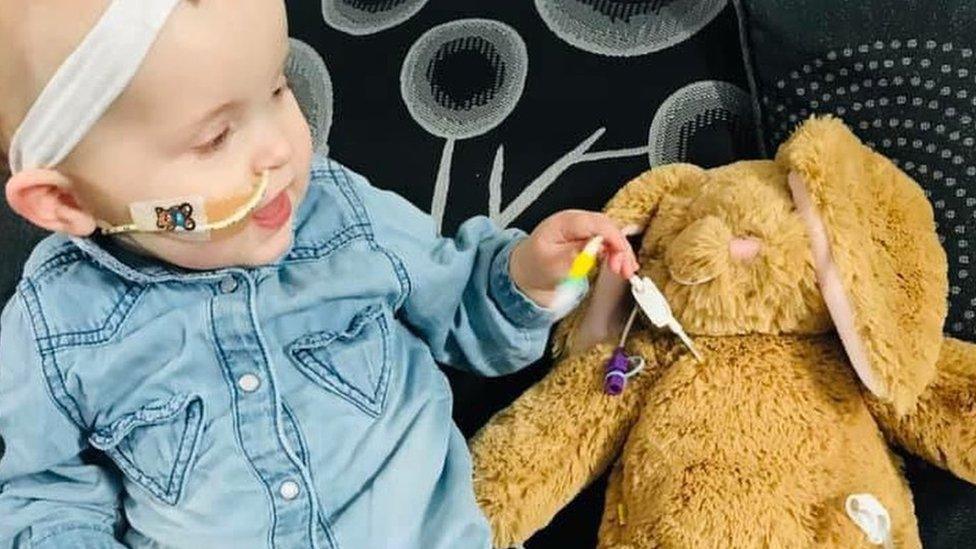Tube dolls created for sick children by Eckington dancer
- Published

Tonia Payne-Cheney is a dancer and choreographer with Ballet Cymru
A dancer says modifying dolls for poorly children so they look like them "takes away that fear factor".
Tonia Payne-Cheney from Eckington, Worcestershire, has Ehlers-Danlos syndrome and uses a feeding tube.
She and her friend began modifying teddies first but, because they couldn't be wiped down in hospital, the 26-year-old started adding feeding tubes to dolls.
"It takes away that fear factor when [children] see it," she said.
While Barbie brought out a range of inclusive dolls in August last year, Ms Payne-Cheney says she has been modifying dolls for years.
"I can give the dolls to the child...and they can see that they have the same as their doll," she said.
Her syndrome, an inherited condition, affects the connective tissues supporting her bones.
Ms Payne-Cheney, a dancer and choreographer for Ballet Cymru, said she also goes into schools to help children understand about feeding tubes and uses the dolls as a way to do so.
"They get to hold it and touch it and play with it where they wouldn't be able to before," she said.
Ms Payne-Cheney said the children responded "great".
"Now if a child goes into that school who has a tube they can be confident that everyone will know what it is and know not to touch it," she said.

Ms Payne-Cheney said she added feeding tubes to dolls to help children understand about them
Ms Payne-Cheney said she also had other genetic conditions which left her completely bed-bound and had to undergo a "massive brain and spinal operation".
"I got back to being well...but then I got really poorly again and was in Spain in a coma for five months and now I've been left with a breathing tube that I have to have all the time [as well]".
"But we just have to get on with it, you know I carry on doing my trapeze and dancing and horse-riding," she said.

Symptoms of Ehlers Danlos Syndrome
an increased range of joint movement (joint hypermobility)
stretchy skin
fragile skin that breaks or bruises easily
Source: NHS, external

Follow BBC West Midlands on Facebook, external, Twitter, external and Instagram, external. Send your story ideas to: newsonline.westmidlands@bbc.co.uk, external
Related topics
- Published18 August 2022

- Published28 January 2020

- Published5 February 2019
